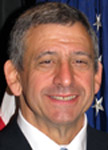Click to download the full report, Planned Special Events – When Things Go Wrong
 Planned special events take place every day across the United States and around the world, as do incidents. When those events and incidents overlap, however, the consequences can be devastating: a marathon and two bombs; a movie theater and a shooter; a high school graduation ceremony and a tornado; and the list goes on. Each event, whether planned or unplanned, has the ability to start a chain reaction of many more incidents – both large and small.
Planned special events take place every day across the United States and around the world, as do incidents. When those events and incidents overlap, however, the consequences can be devastating: a marathon and two bombs; a movie theater and a shooter; a high school graduation ceremony and a tornado; and the list goes on. Each event, whether planned or unplanned, has the ability to start a chain reaction of many more incidents – both large and small.
Recognizing the threats and risks – related to elements of the event, the venue, and the surrounding area – and taking effective and swift action can help mitigate an interrelated series of events. Because of the many “unprecedented” incidents that have occurred in recent years, perhaps the best scenario to plan for is a worst-case scenario, but that requires much planning and training.
Regardless of budget cuts, government shutdowns, and time constraints, organizations must still find ways to support a robust training program that is well attended by all stakeholders. Although circumstances often force planners to sacrifice long-term planning and training for short-term concerns, training and communication must remain at the forefront.
There are no shortcuts for building relationships, developing strategies, and implementing emergency plans, so the time to begin is now. In light of the lessons learned from the Boston Marathon bombings, emergency planners, responders, and receivers have collaborated to create this report and to better plan and execute future special events.
